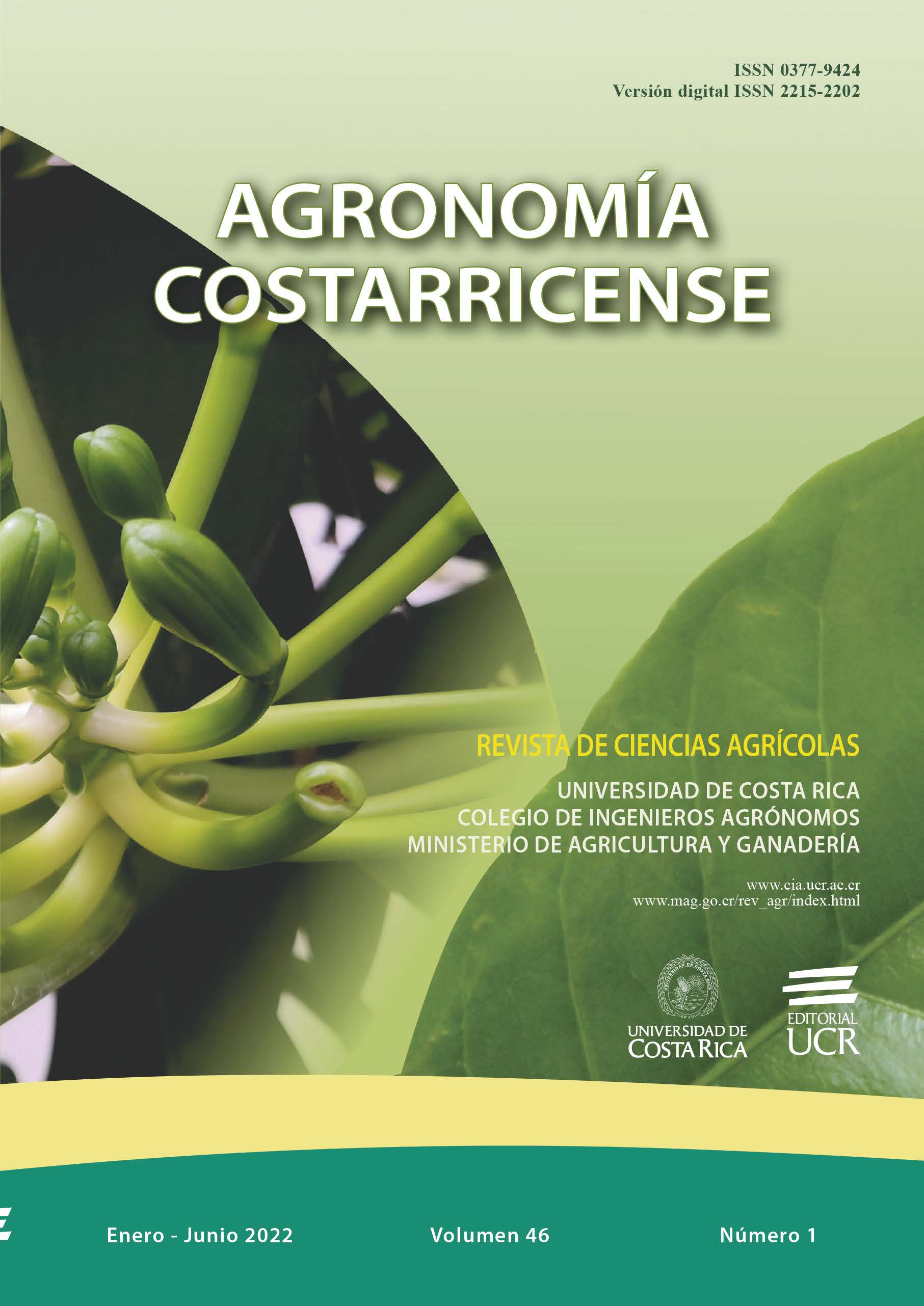Abstract
Introduction. Pineapple is the second most important crop in Costa Rica, after banana. The Golden MD-2 variety standing out as the one with the highest demand in the United States and Europe. In 2019, the cultivation area was 40 000 ha distributed in the North, Atlantic and Pacific zones. Objective. To determine the presence of the pathogen Fusarium guttiforme, and to identify and characterize the present species of this genus, in the pineapple crop in Costa Rica. Materials and methods. 215 plants and 20 fruits were collected from different regions between the 2015-2019 in a total of 38 175 ha of the pineapple planted area through a sampling directed towards symptoms related to the “descending death of pineapple”. For the morphological characterization observations were made of the color of the mycelium, details of structures such as macro and microconidia, chlamydospores and conidiogenic cells in samples previously identified by molecular means. Molecular identification was carried out from 120 isolates with the molecular markers ITS and TEF-1α. Results. F. guttiforme was not detected in pineapple plantations in the period between 2015-2019. Six species were identified, Fusarium ananatum, F. oxysporum, F. concolor, F. proliferatum, F. incarnatum and F. solani whose accession numbers in the National Center of Biotechnology Information are attached in this article. The species F. ananatum, F. oxysporum and F. proliferatum have been previously described as pathogenic in pineapple. The presence of F. ananatum in 95% of the collected fruit was related with the disease “fruitlet core rot”. F. proliferatum is a generator of mycotoxins, which could represent a danger to animal and human health. The other species have not been reported in pineapple before. Conclusion. The presence of the pathogen F. guttiforme was not found, although there were identified the species of this genus, present in pineapple cultivation area in Costa Rica.


